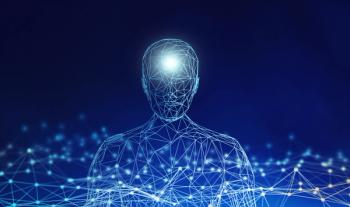
Digital Mental Health: How to Engage With Innovation, Part 2
Among the innovations presented at the 2019 APA meeting: voice analytics for detecting and monitoring mood, and smartphone and web-based passive data as a digital biomarker for mental health disorders.
A popular topic at the
Professor Julien Epps addresses “Can We Diagnose Mental Illnesses Using Voice Data Collected From Phones?”
Speech production is not only the most complex coordination of neuromuscular activity in the entire body, but is sensitive to a vast range of influencing factors, including cognitive function, affective state, motor function, fatigue, and social context. Speech can also be conveniently collected non-invasively and non-intrusively at low cost via smartphone and has attracted research attention as a behavioral signal that is indicative of many psychiatric disorders.
Speech comprises two main components: linguistic-what is said-and acoustic-how it is said. To date, most research has focused on acoustic approaches. For example, insights about depressed speech include reductions in prosodic variation, spectral variability, vowel space area and speech rate, and increases in phone duration and motor incoordination. However, even features as simple as the duration of speech detected by a smartphone over a fixed period, as a proxy for social interaction, have been shown to be indicative of depression level.
Automatic speech-based assessment systems are likely to be applied to screening of the general population or to the monitoring of mental state within an individual (eg, in response to treatment), rather than to diagnosis. Because of the richness of information conveyed by speech, it contains many forms of unwanted variability: due to speaker identity, spoken content, and other factors unrelated to the disorder. Mitigation of these sources of variability is an active research area.
Many speech feature extraction approaches can run in a fraction of real time on a smartphone processor, or extracted features can be efficiently sent via network to a server to process. Similarly, many machine learning approaches are computationally feasible for smartphone platforms. Smartphones offer a unique opportunity to either elicit speech (via app) or process speech passively during everyday use. Elicitation methods include sustained vowels, read speech, diadochokinetic stimuli (eg, “pa-ta-ka”), interview, virtual human interview, and mood induction. However, tasks controlled for affect, articulatory effort, and linguistic complexity have been shown to help discriminate disorders more effectively based on speech.
Opportunities abound, including the possibility for regular minimal-cost assessment, longitudinal within-individual analysis, and integration with smartphone-based interventions or automatically cued therapy (eg, social rhythm therapy). Smartphones also offer the opportunity to crowdsource very large databases and hence develop a stronger evidence base. For more information, please contact
Abhishek Pratap addresses “Can the Digital Data From Smartphone and Online Web Searches Indicate Early Signs of Severe Mental Health Issues, Including Suicide?”
The large-scale adoption of smartphones and online search engines (>5 billion queries a day) offers a unique opportunity for researchers to engage, assess, and monitor social, emotional, and behavioral states at the population level, in real time, with limited user burden, and at low cost.
Continuous passive data streams (eg, GPS) could offer the means to assess, contextualize, and trigger need-based survey assessments objectively without requiring the user to share sensitive location data. Geospatial contextual analysis pipeline (
Online information-seeking behavior (web searches) is another rich source of passively collected data that can potentially uncover health-related behavior based on the proximity and type of information sought by the user. In an on-going pilot study as part of
Dr Torous is Director of the Digital Psychiatry Division, Department of Psychiatry at
Newsletter
Receive trusted psychiatric news, expert analysis, and clinical insights — subscribe today to support your practice and your patients.













